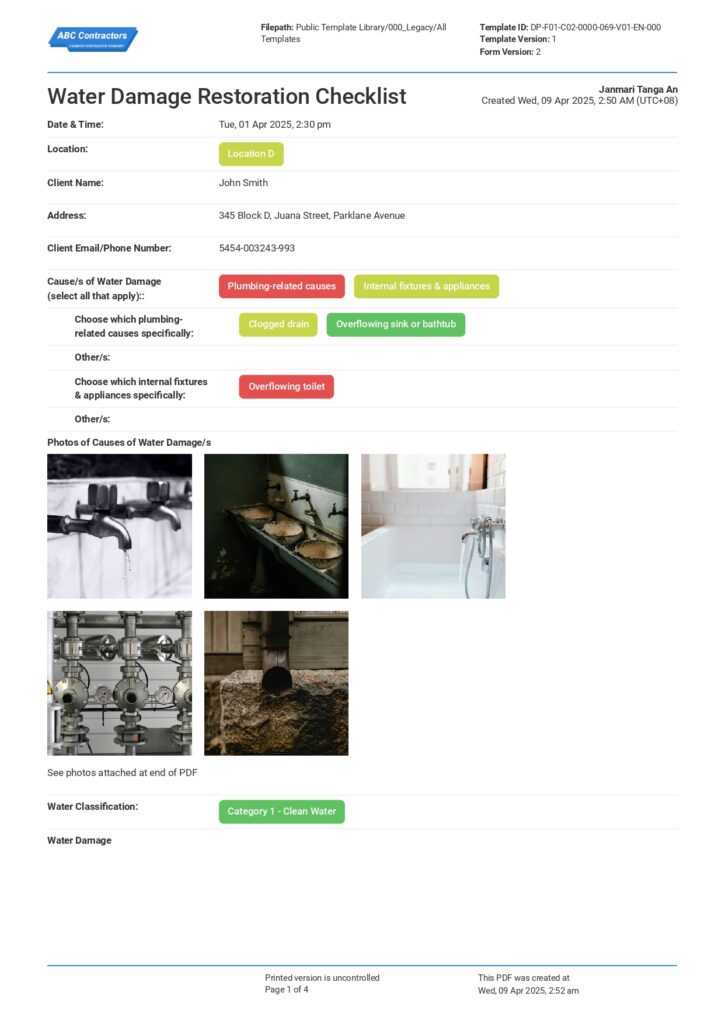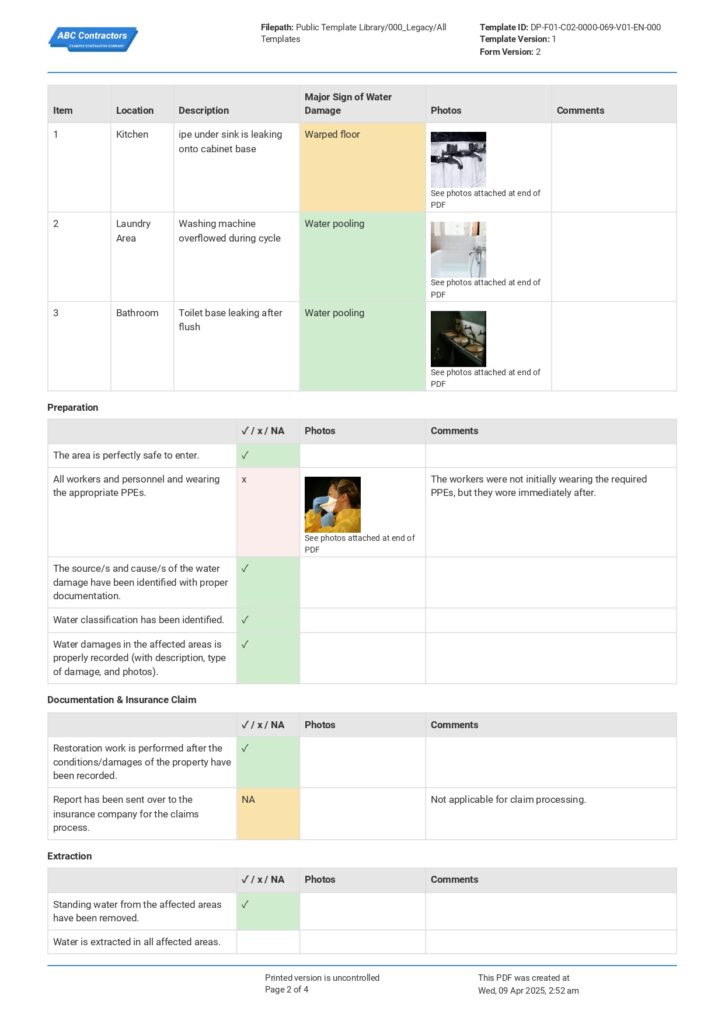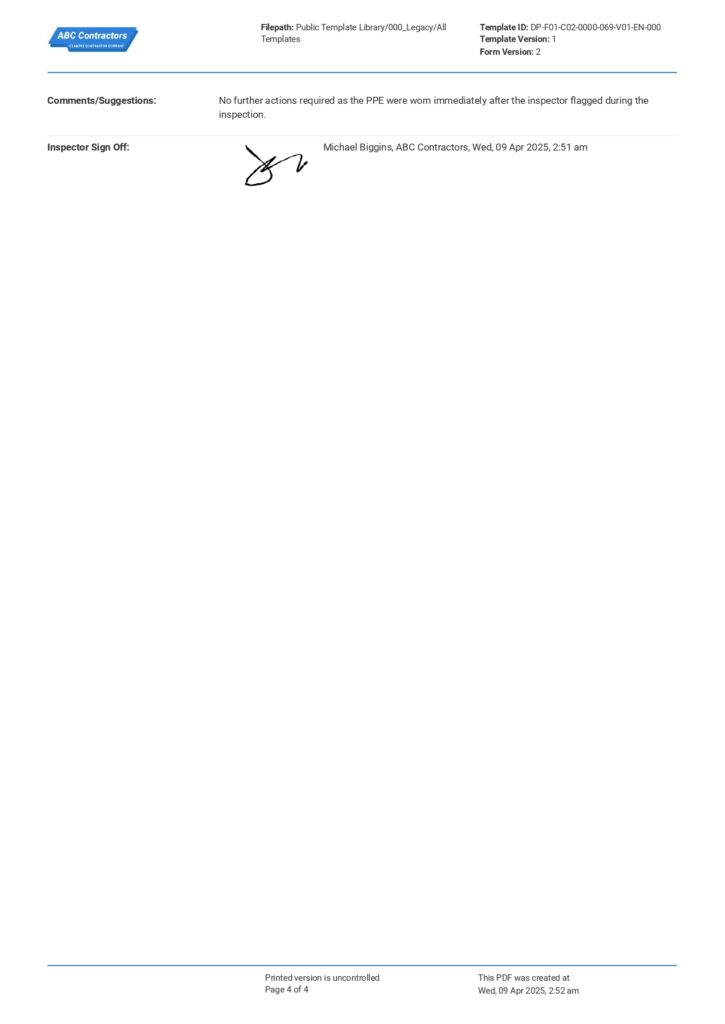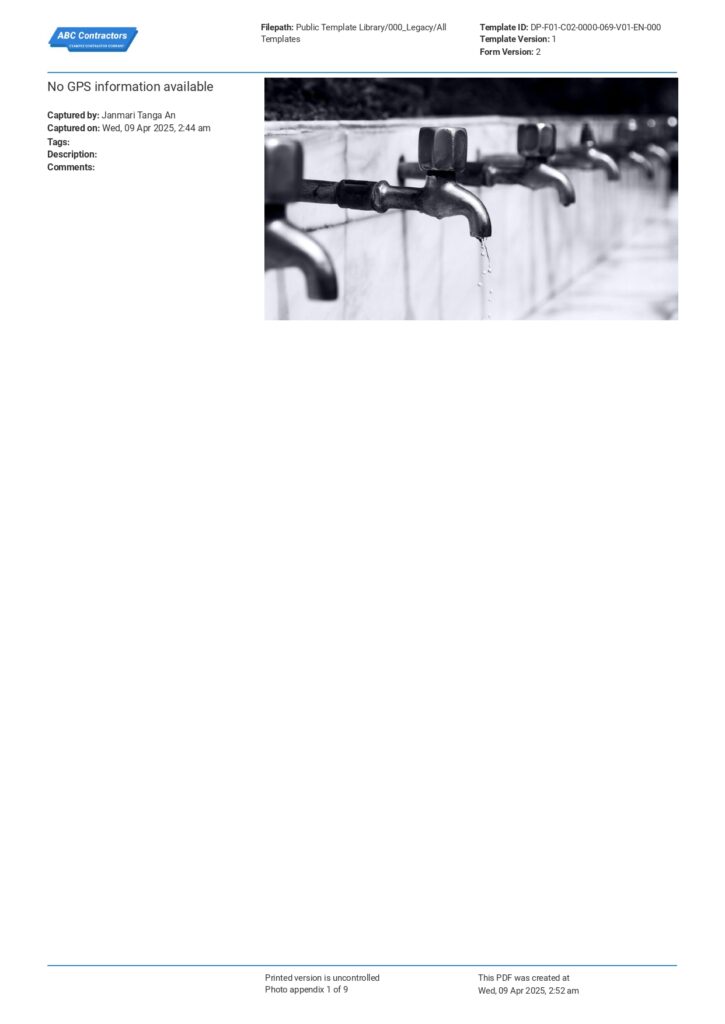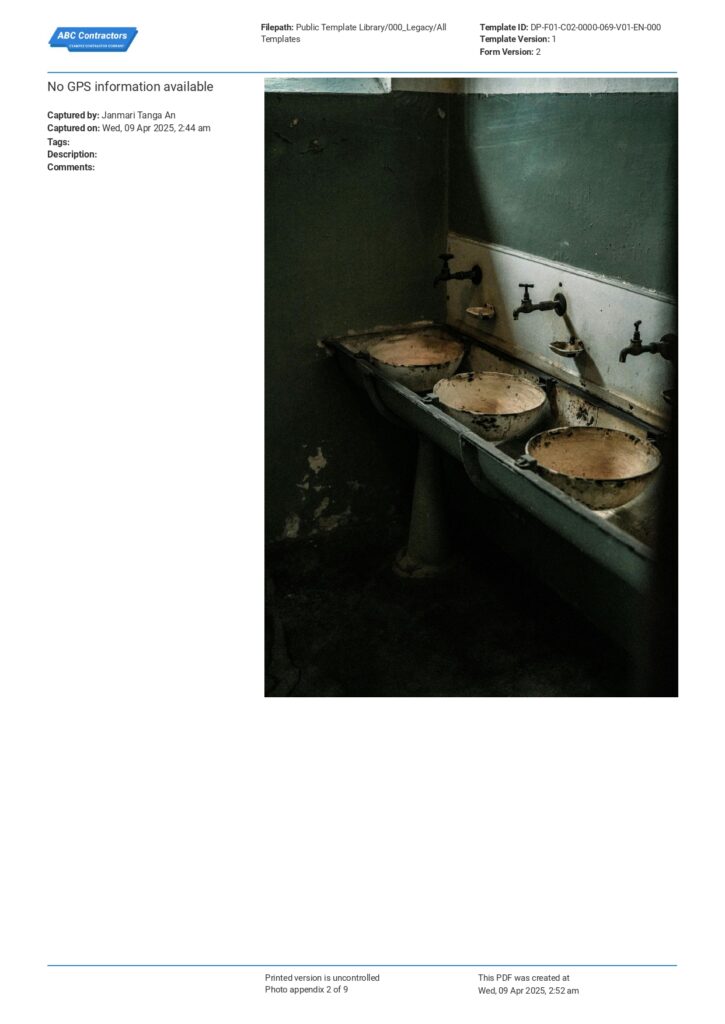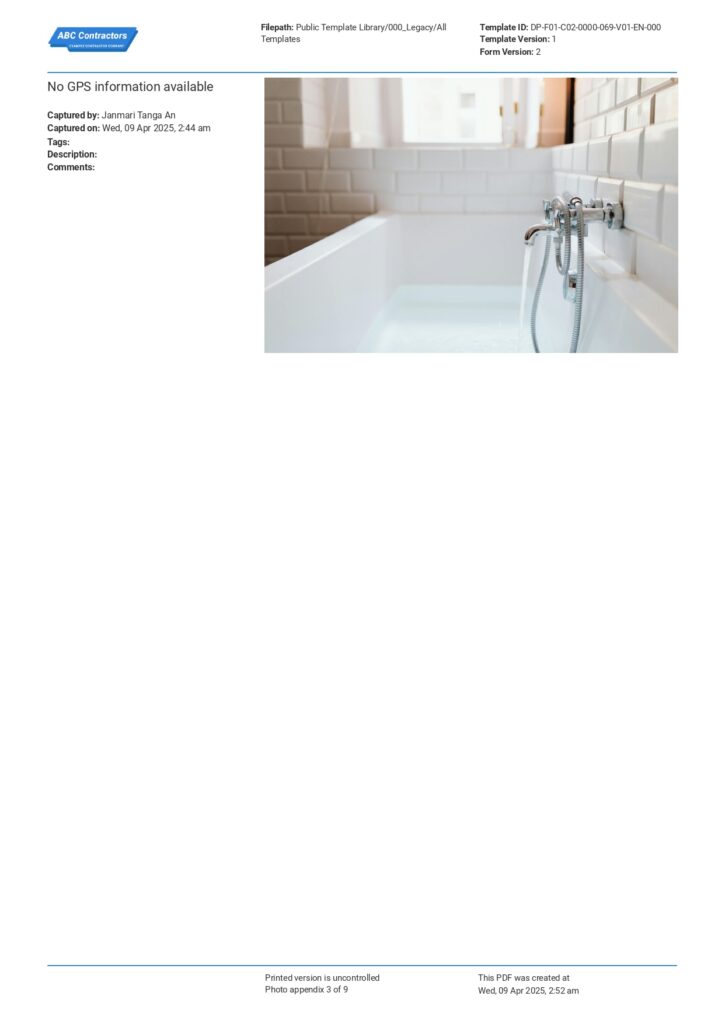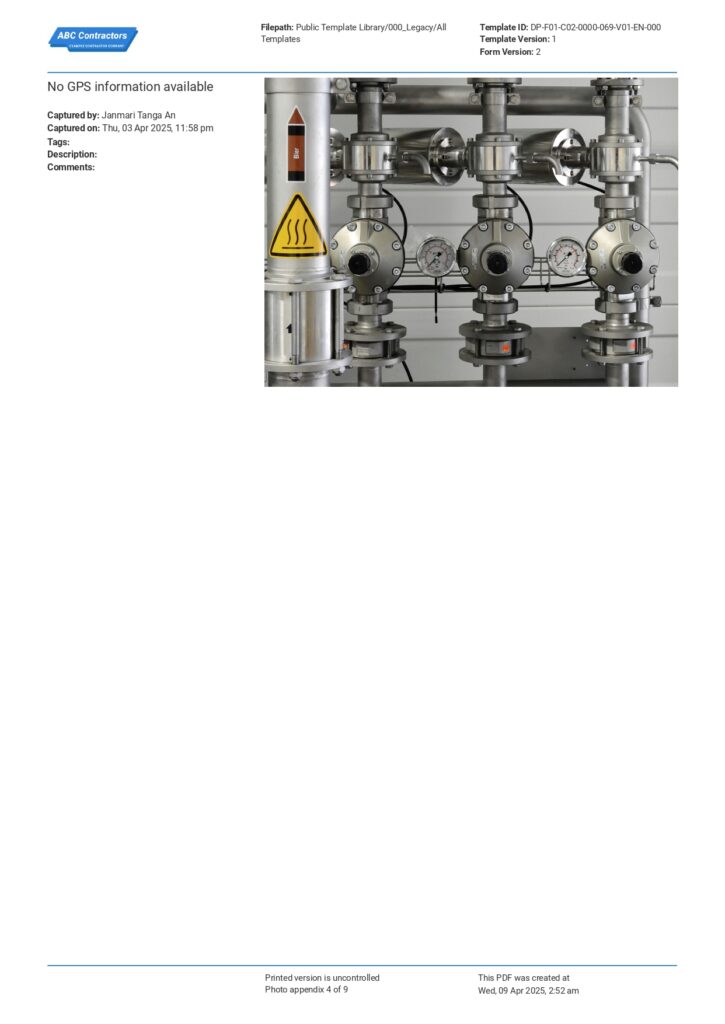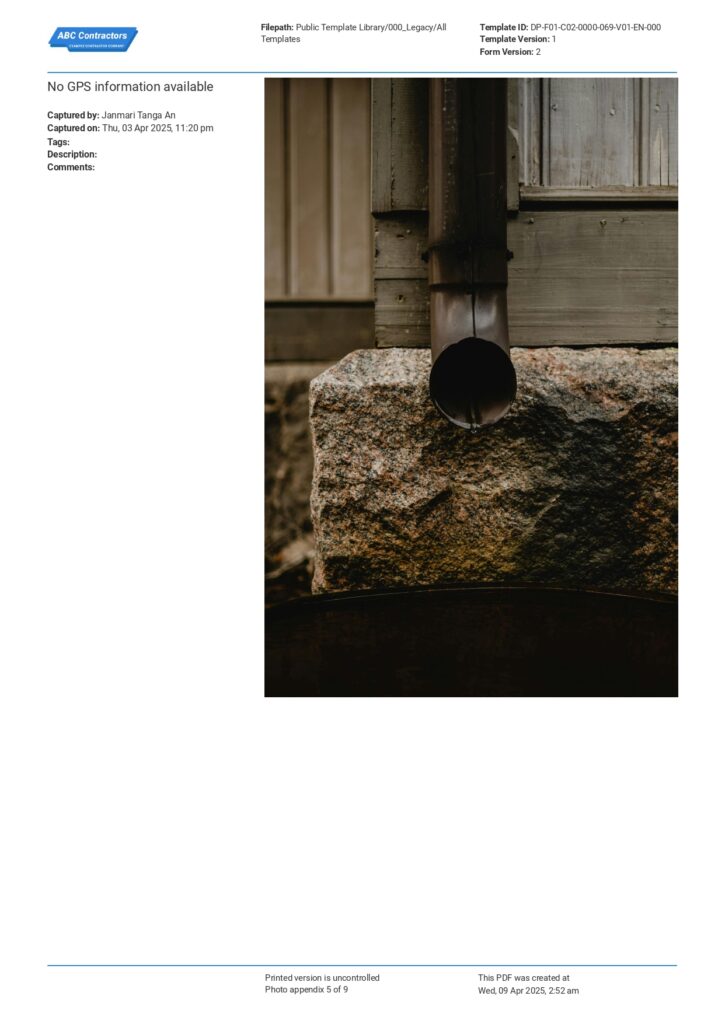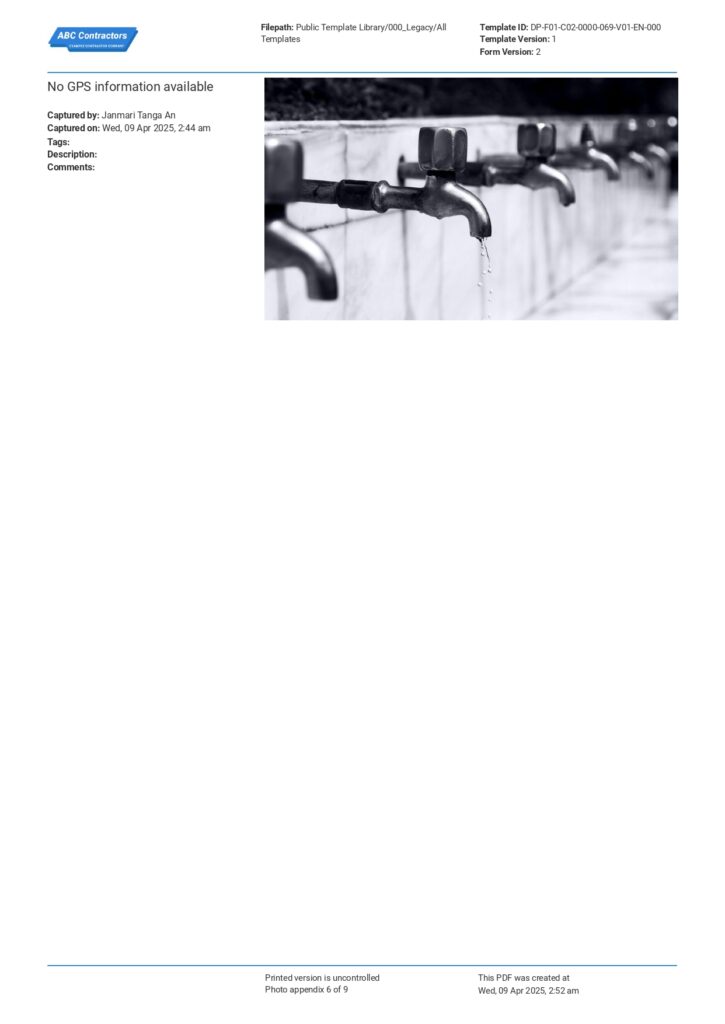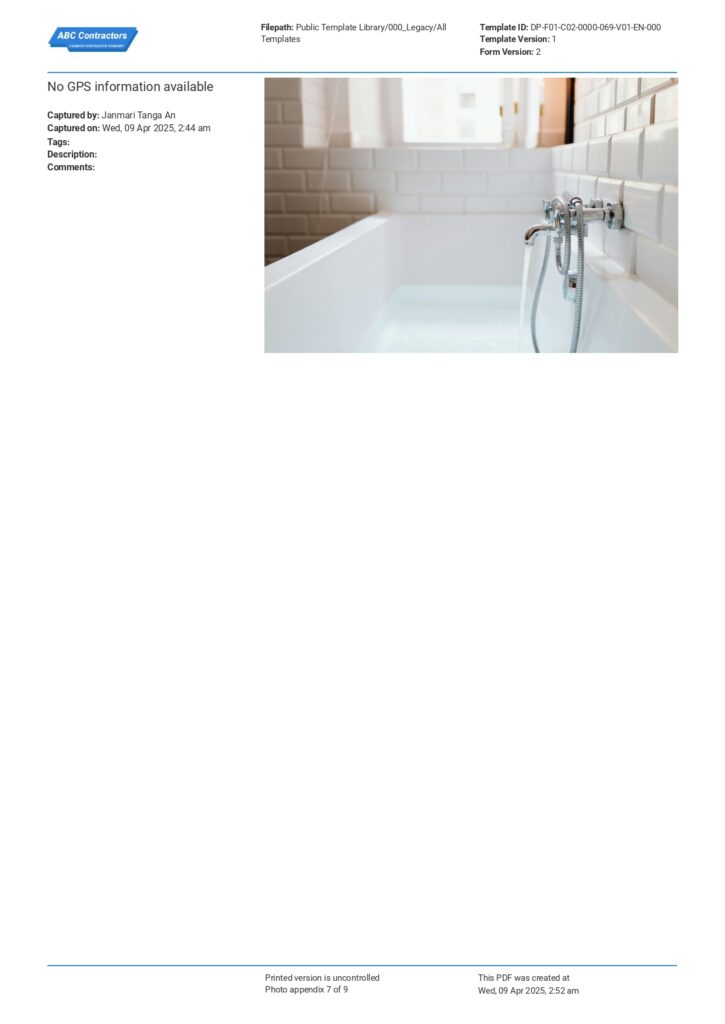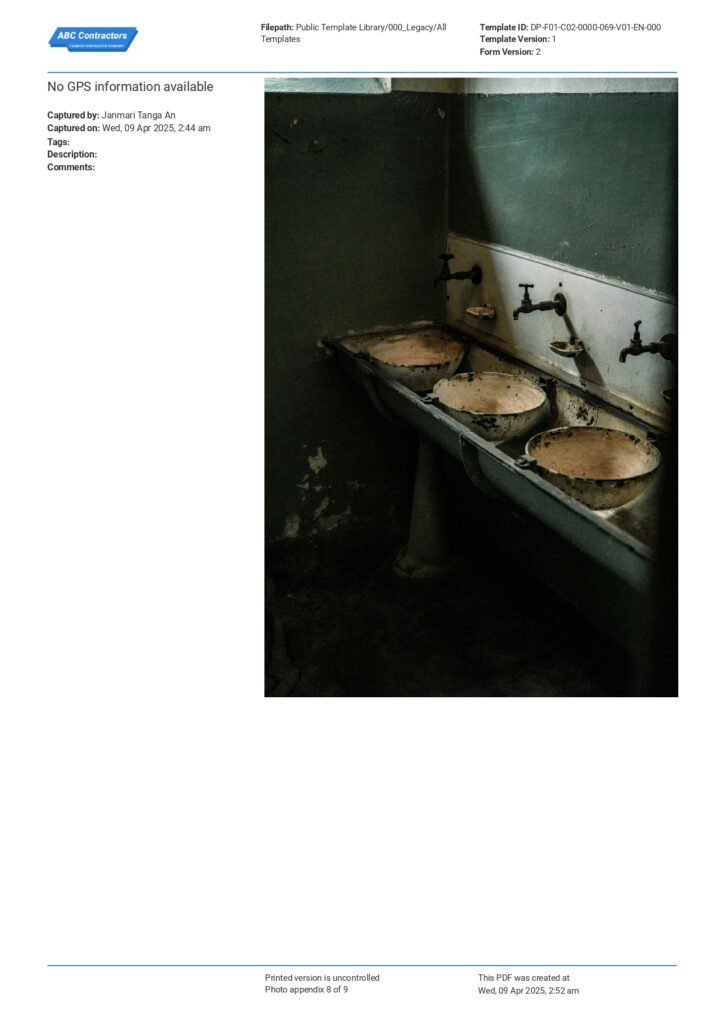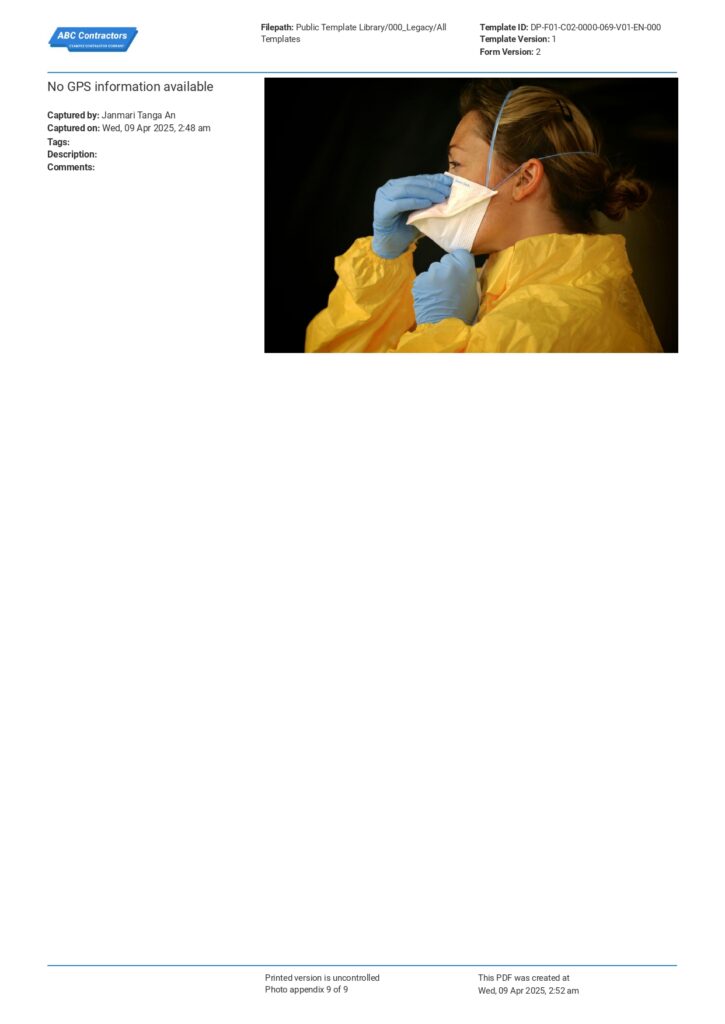Water Damage Restoration Checklist Template
Start with a free 30-day trial. No credit card required.
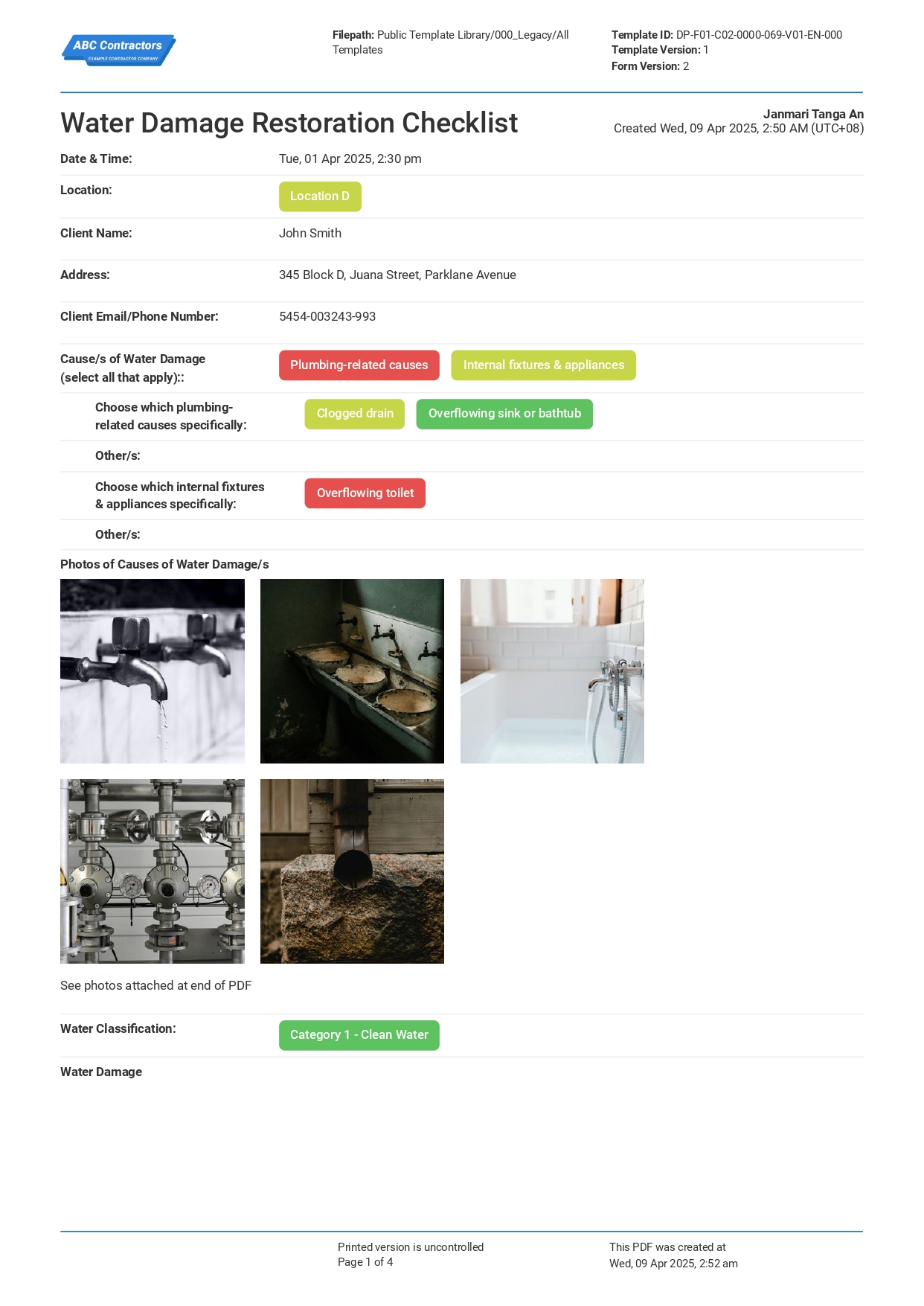
~10,000 employees
~500 employees
~25,000 employees
~20 employees
~50 employees
~1,500 employees
~20 employees
What is a Water Damage Restoration Checklist?
A Water Damage Restoration Checklist is essentially a to-do-list form detailing the specific operations restoration inspectors must go through to determine the extent of the property destruction caused by water damage. The contents are straightforward and specific, and additional check items will depend on the degree of the damage. This checklist is a tool for professionals who will assess the damage to the property, which could either be residential or commercial. Assessments are usually requested by property owners during restoration and could either be just to describe the damages for restoration purposes or for filing insurance claims.
Compare this smart checklist to paper-based forms like Word, Excel and PDF
Use this Water Damage Restoration Checklist template for free.
Why is Water Damage Restoration Important?
Water damage can destroy a property, residential or commercial, causing minor to severe issues to the structure and appearance, and further endangering the safety of the occupants. From water stains on walls and ceilings, rotting of wood, rusting of steel, etc., it can escalate to more dangerous situations that harm the occupants, like mold and bacteria growth, or issues that could cause short-circuiting of electrical devices. In instances of industrial or hazardous environments, water damage in the surroundings can cause fuel to spread and trigger electrical fires.
In any case, water damage is absolutely undesirable, and restoration professionals understand the consequences of untreated water damage. This is why any reasonable business, or homeowner would work hard to restore the condition of the building, avoid further damage, and bring in professionals to assess and restore the condition of the property.
Water damage restoration is important, and professional are essential to not only prevent further deterioration of the structure, leading to additional costly repairs but to mitigate health hazards—especially in the case of mold and bacteria growth, which poses a major health risk.
Water Damage Restoration Steps and Procedure/s
Given the importance of water damage restoration, it is also essential to conduct the process with quality in mind and in consideration still with local building codes and regulations. So, how is water damage restored? Here are the basic steps and procedure to consider:
Step 1: Identify the cause of the water damage
The water damage can be caused by several reasons. The standard procedure is to conduct visual inspection in the interior and exterior of the building and pay close attention to moisture-prone areas such as ceilings, walls and floorings especially if the cause is not too obvious. Below are common causes of water damage:
• Plumbing-related causes - These are usually the recurring factor in water damage issues, and it can be from busting and leaking pipe, broken supply line, clogged drain and more which can damage the walls, floors and ceilings. Plumbing issues can be from faulty installations or ignoring signs of plumbing failure.
• Weather/Natural causes - Water damages may result from unrollable natural events such as the comes from heavy rainfall, flooding, storm and other natural causes. Recovery might take a while and might also depend on the damage from the impact in the community depending on the extent of the damage of the community.
• Structural/Building issues - Parts of the building may have structural issues that can cause water leakage from the roof, window or doors and other areas from the structure of the building that failed in waterproofing.
• Damage from internal fixtures and appliances - Water damage can also result from issues relating from indoor appliances such as refrigerator or air conditioner which often can be related to plumbing system issue such as drainage failure or hose leak.
These descriptions from causes of water damage are some sources you can look out for when identifying the cause of the water damage. Identifying the correct source is the first step of water damage restoration.
Step 2: Water Extraction
The next important step in water damage restoration is water removal and extraction. Removing the standing water from the affected areas is crucial to prevent further damage. Using special tools such as pumps this could be submersible and truck-mounted, vacuums, and other drying equipment.
Step 3: Drying & Dehumidification
After extracting water, the next step is to conduct drying and dehumidifying, since there are materials that retain moisture even after the water is removed. Incomplete drying leads to mold growth, unpleasant odors, and further damage to the wall, such as in its finishing. Removing moisture from the air with the use of dehumidifiers is essential to ensure that the property and contents are totally dry.
Step 4: Cleaning and disinfecting
These are some of the final steps of water damage restoration to ensure that the water-damaged area is not contaminated with bacteria. Water damage causes the buildup of bacteria in walls, floors, or carpets. Depending on the area of the residence, there are specific guidelines to clean and disinfect. Generally, in this step, it is necessary for the cleaner to take photos before cleaning, wear protective covering, and be well-trained for any sort of stain or cleanup needed.
Step 5: Repair, reconstruct and restore
The final step in water damage restoration is conducting necessary repair and reconstruction to restore the damaged areas to its condition prior to the water damage. Based on the assessment during or after the damage, restoration should be based on this for it to be more accurate. Essential aspects such as wall or flooring replacement and repair and ensuring electrical systems are cleared by professional technicians should not be overlook.
Finally, it is very important to document these job steps in a comprehensive checklist, preferably a digital one that is integrated into a quality management software such as Dashpivot. A water damage restoration checklist with the ability to record descriptions of signs of water damage conveniently, add photos for before and after the restoration, and one that can be accessed from your mobile devices is a game-changer for restoration professionals.
How long does water damage restoration take?
Water damage restoration takes as long as necessary, depending on the extent of the water damage, which also depends on the cause. If the water damage is inherently a structural issue, such as roof leakage or foundation issues, then it needs more time and largely depends on the extent of the structural damage, which may take months. If the damage is plumbing-related, such as burst pipes or a leaking appliance, then it could take a shorter time, perhaps less than a week, as it’s a more straightforward restoration.
Early detection is the key to reducing restoration time and cost. It’s important to have regular inspections to look for signs of water leaks in the building. Leakage inspection, as well as plumbing and appliance checks, is essential. It’s a preventive maintenance approach that helps prevent unexpected, unsafe, and costly water damage incidents as much as possible.
Frequently Asked Questions
Why is this the best restoration checklist template?
Sitemate's Water Damage Restoration Checklist is the best inspection template because it is already proven by thousands of inspection companies. It comes pre-built to align with restoration professionals best practice, and is quick and easy to use for any type of worker.
Is this template compliant with ANSI/IICRC S500 standard?
Yes - this template is aligned with the practices outlined from ANSI/IICRC S500 and can be configured to aligned with ISO and other local safety legislation in Australia, the UK, New Zealand, and other regions. It's already used by certified contractors across inspection industries to either get or maintain certification status.
Can I use this Water Damage Restoration Checklist offline?
Yes - the template can be used offline when you don't have wifi or internet connection during water damage assessment in dead-spot areas.You can fill out this template, take photos and use it with the same functionality online. It will sync and upload the information once you regain the connection.
Is this Water Damage Restoration Checklist suitable for both residential and commercial properties?
Yes, this template is suitable for both residential and commercial properties. It is also completely editable with easy drag-and-drop functionality to suit specific information making it easy for the qualified inspector to easily fill in during the actual assessment.
Other popular templates you can use and edit for free

Commercial Building Inspection Checklist
Easy to navigate checklist for any type of commercial building, hassle free and fully editable.
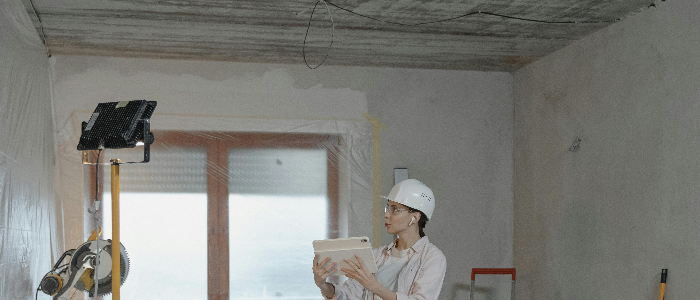
Structural Damage Report
Get it done quickly and accurately with this hassle-free, report-ready disaster management tool.
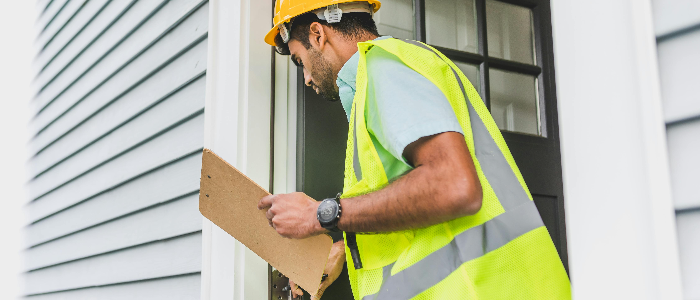
Property Inspection Report
Simplify report handling with this polished, and efficient property inspection tool.
This smart checklist was generated with Dashpivot software
It's time to upgrade your systems and switch to smart and paperless methods to improve your water damage documentations.
- Access and fill out your checklist using your mobile, tablet or computer.
- Print, download or send your restoration checklist as perfectly formatted PDF reports with your company logo.
- Manage and store your checklists securely online, where they can be searched and found in seconds
- Invite internal and external parties to see, edit and sign off on assessments online.
Sitemate builds best-in-class software tools for built world companies.
